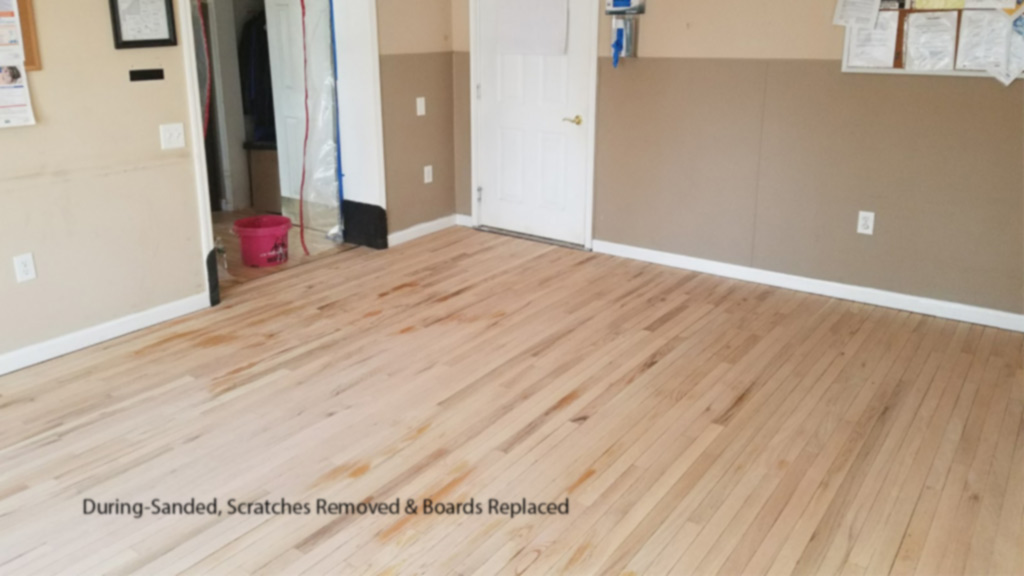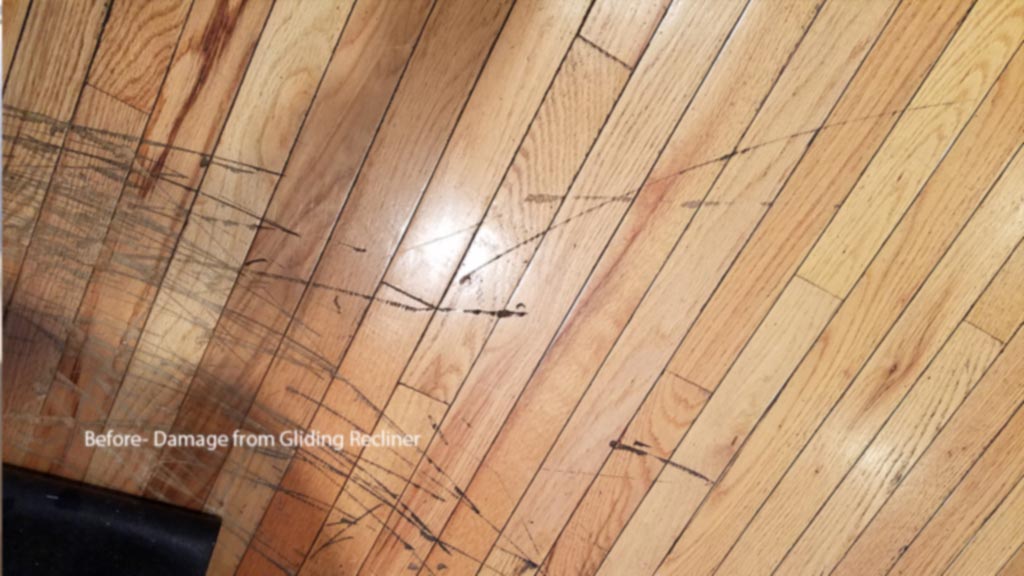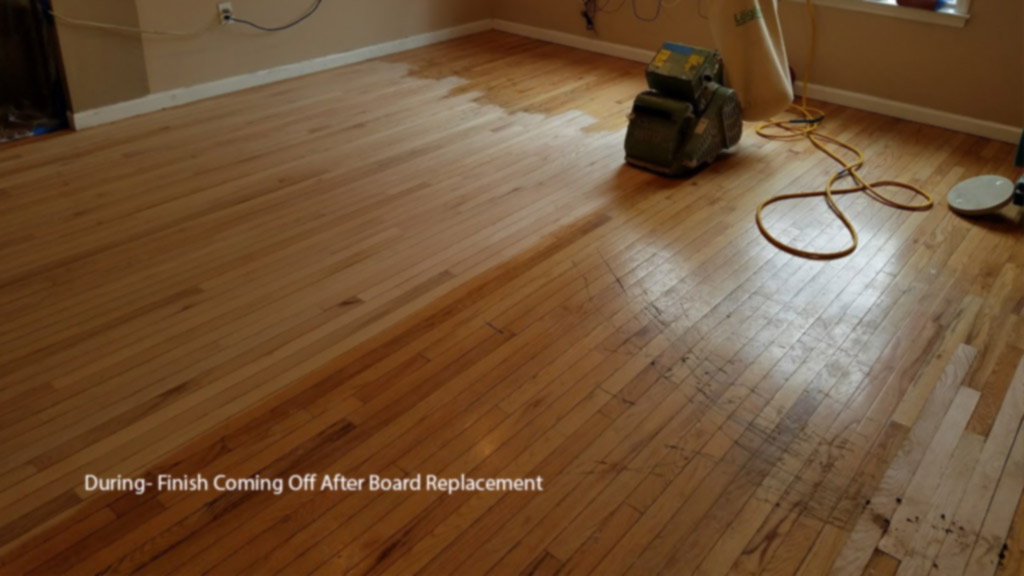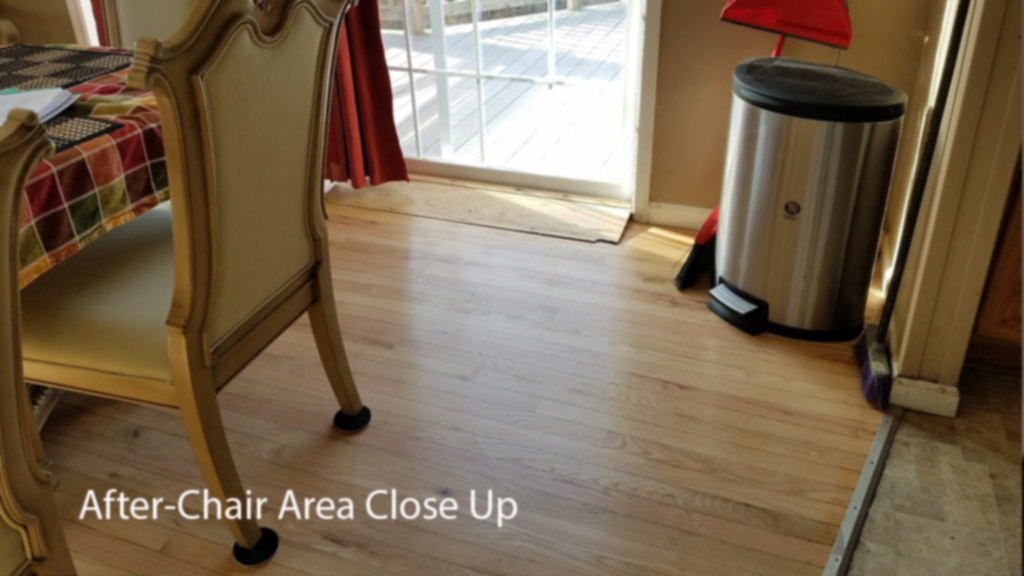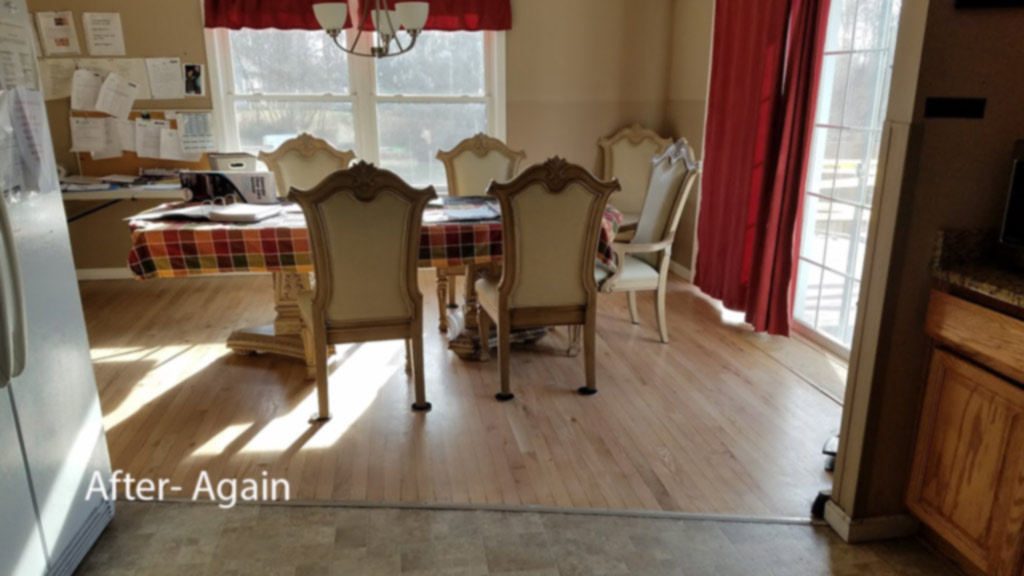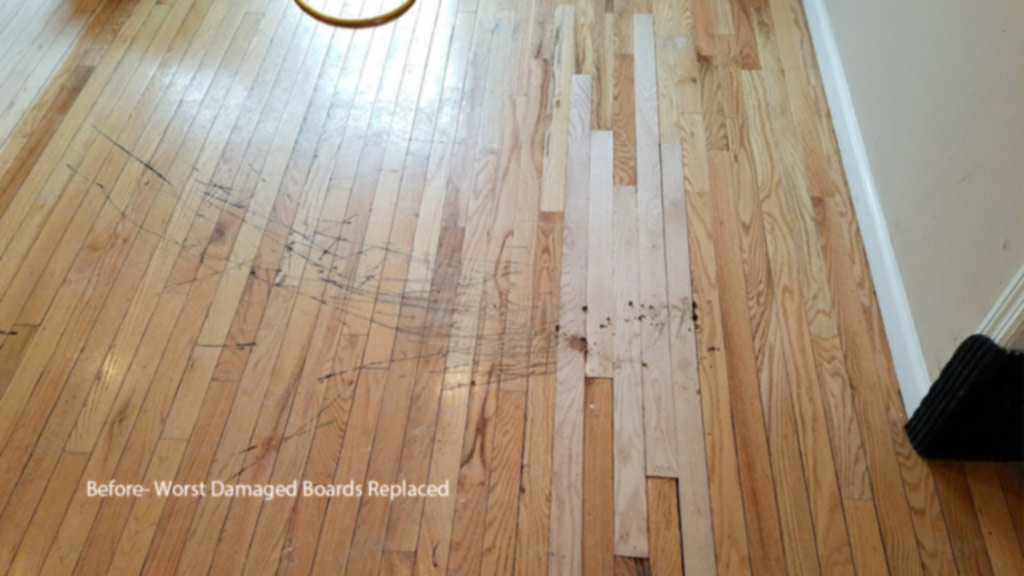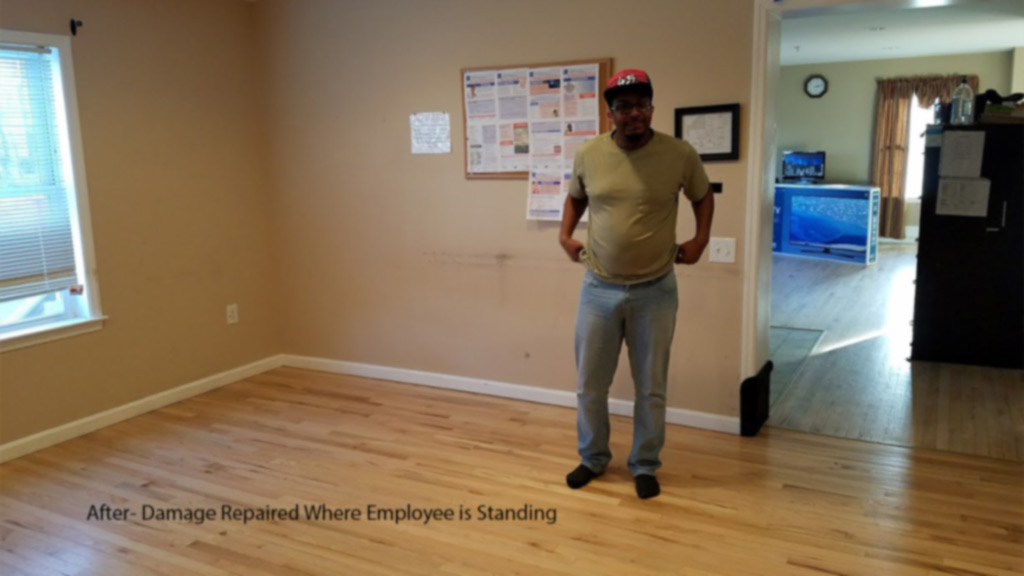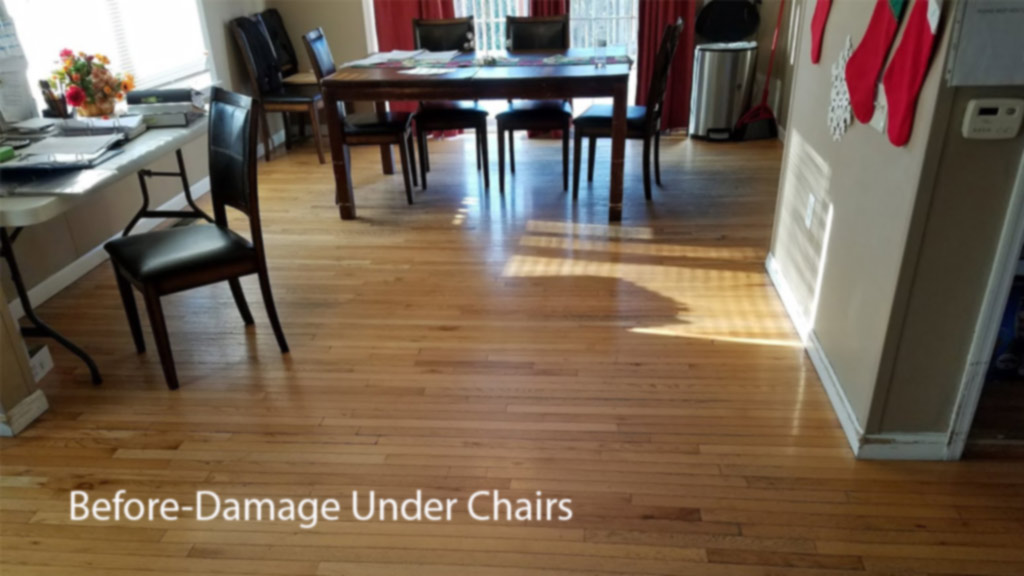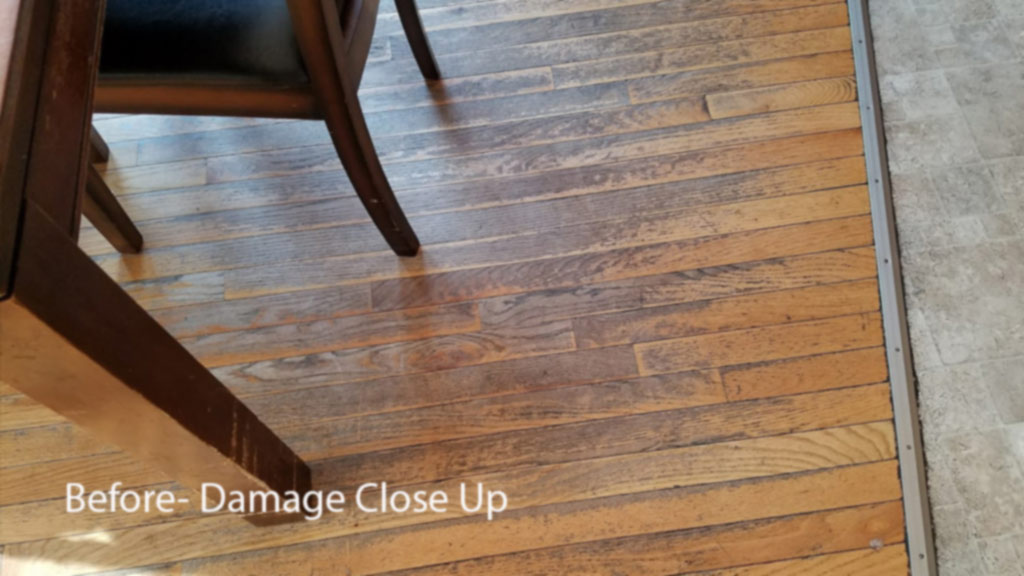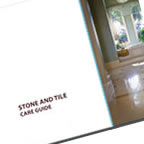Group Home Wood Repaired and Shine Restored
- Home Case Studies Group Home Wood Repaired and Shine Restored
The Prelude- Group Home In Burlington Needs Floors Refinished
This group home in Burlington County does wonderful work in providing a safe, clean and home like environment for 5 gentleman residents who might otherwise be institutionalized. The staff should be commended, they work hard, 24-7 and 365 days a year. Truly a labor of love, we are so inspired and in awe of the good deeds these caring folks do. And while this is home for the residents, it also is a very busy work environment for multiple staff in and out. The hardwood floors have taken a beating!
The Problem
First off the home sits in a sandy field, and sand on people’s feet is tracked in constantly with every person coming and going. There are medical people, aides, drivers, delivery people, handy men, contractors, family and friends. Hence, it is a very busy place. On weekdays the residents attend a daily program off site, so they are back and forth as well. Some walk on their own, some shuffle, while others need wheel chair assistance. In general all this foot traffic or wheel chair traffic is hard on the floors.
The worst areas affected are in the living area, dining area, and the office. These areas are the heart of the home, and where staff and residents hang out. In the dining room, the chairs around the table have completely worn off the finish, so patches of the floor are dark, worn, dull and scratched. In the living room, there is scratched areas in front of the sofa. But, the damage in the office trumps that in the living room and dining room.
In the office they had a love seat with a glider that rocks back and forth. The glider mechanism caused deep cuts and scratches that stuck out like a sore thumb. Over time dirt filled in the scratches and made it look like a hot mess.
About Scratches, Slices, Gouges or Dimples In Hardwood Boards -Things and Actions That Cause The Damage to Hardwood
Mechanical hardware used for gliders or hide away beds can badly damage hardwood floors. Bar stools and kitchen chairs without felt tips can also damage them. Another common offense can be from dog’s nails, either from big active dogs, or from tiny little dogs. Untrimmed nails can show up in the finish (not the case here). Other scratch marks appear when heavy furniture is dragged across the floor, and may cut through the finish. Or, the dragging action simply depresses the wood, especially the softer woods such as pine, from the weight of the piece (like a divot, depression or gully). Another instance which damages hardwood is the rolling of hard plastic wheels, like a work station desk chair loaded with gritty sand. It certainly will grind away eventually impeding the finish and make it look worn and dull.
One unsuspecting cause of hardwood floors that is quite surprising, is from ladies wearing hi heels. And while not the case at this group home (most traffic is sneakers, boots or clogs like medical staff wear,) it is worth noting. An elephant standing on a wood floor displaces less weight across the contact point of the floor than a 125 lb woman wearing hi heels. Rule of thumb, especially with softer woods like pine, hi heel traffic should be kept off the hardwood. Stilettos are known to be a culprit, as other hi heels, but damaged heels where the cushion is worn off is a recipe for disaster.
Case in point, a family we know bought a beautiful manicured custom home, which had pine floors throughout the first floor. Weeks after moving in they had a New Year’s Eve Party, inviting about 40 people. In 1 night, over $10,000 of damage was caused unknowingly by the lady guests in attendance.
How to tell if your hardwood floor scratches need to be sanded to be fixed.
If while running your fingernail across the scratch stops in the scratch, that scratch will have to be sanded out to remove it. If it is even deeper the board probably needs to be replaced. So in order to fix what can be a small area, a much larger area may have to be refinished as well. To compound the problem, if the scratch runs across several boards, instead of lengthwise, well the project then becomes more complex and, more costly.
It’s worth noting, often even small damaged areas cannot be spot repaired the entire floor may need sanding, or it may look unsightly!
Nine times out of ten hardwood floors experience isolated areas of damage. Maybe it’s one board, the area under the bar or table, near a window or a door that gets damaged. However, repairing the isolated area where ever it is, will stick out and be glaring. Not only will the finish appear obviously different, like partially painting a wall, trying to match stain can be almost impossible. Often you need to include a much larger area. So very quickly that small area of damage to repair can grow to the entire room, or rooms, or even the entire floor on that level of the home. If this is the case there are a couple of tricks to contain the work needed, but not without concessions.
The Challenge- Working While The Residents Were Out (Not until after 9, but before 3)
While replacing the damaged oak boards, sanding and refinishing would be relatively easy, isolating the work area would pose a problem. The staff preferred that we do the work after the residents left to attend their daily program, and we had to finish up about the time they returned. Secondly, emergency exits for wheelchairs and hospital beds could not be blocked, so we had to leave an attached hall off the office out of the scope (which normally would be included for uniformity purposes.)
Organizing The Repair
The first task was to remove the damaged boards. After evaluating the gouged boards we decided to replace just 5 of boards and evaluate the remaining scratches after the sanding. As was our hunch, the other scratches disappeared when the sander went over them.
Refinishing The Floors
Next we set about to do the fine sanding, the final sanding phase that prepares the wood for sealing and coating. Since no stain was applied, this would go more quickly. After the office was done we proceeded to repeat the sanding and finishing process in the living room and dining room. The unsightly patches created from dragging the dining room chairs were removed, and the floors were sealed and finished there as well.
The floors looked brilliant and beautiful once again!
While the work was being done, the staff arranged for some painting and updating. Some felt and plastic pads were placed under the table and chair legs to protect the floor. Eventually, (after 30 days) chair pads would be placed under the work stations to protect the floor. Booties were distributed, and staff at least were encouraged to either wipe the sand and grit from their feet upon entering, removing their shoes altogether or using an indoor shoe that doesn’t go outside would be ideal to protect the newly finished floor. Finally, the loveseat that caused the scratches should be replaced, or at the very least a heavy cushioned mat would be best to place underneath so the metal rocking mechanism does not rub against the floor.



